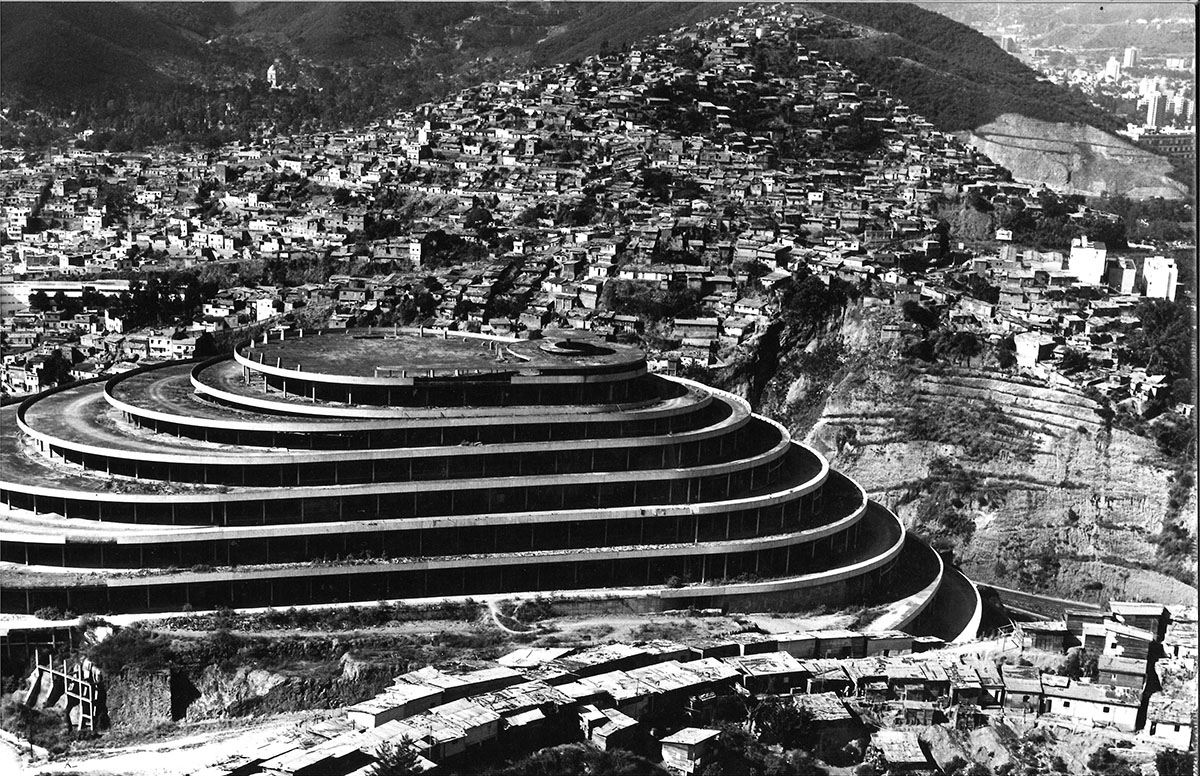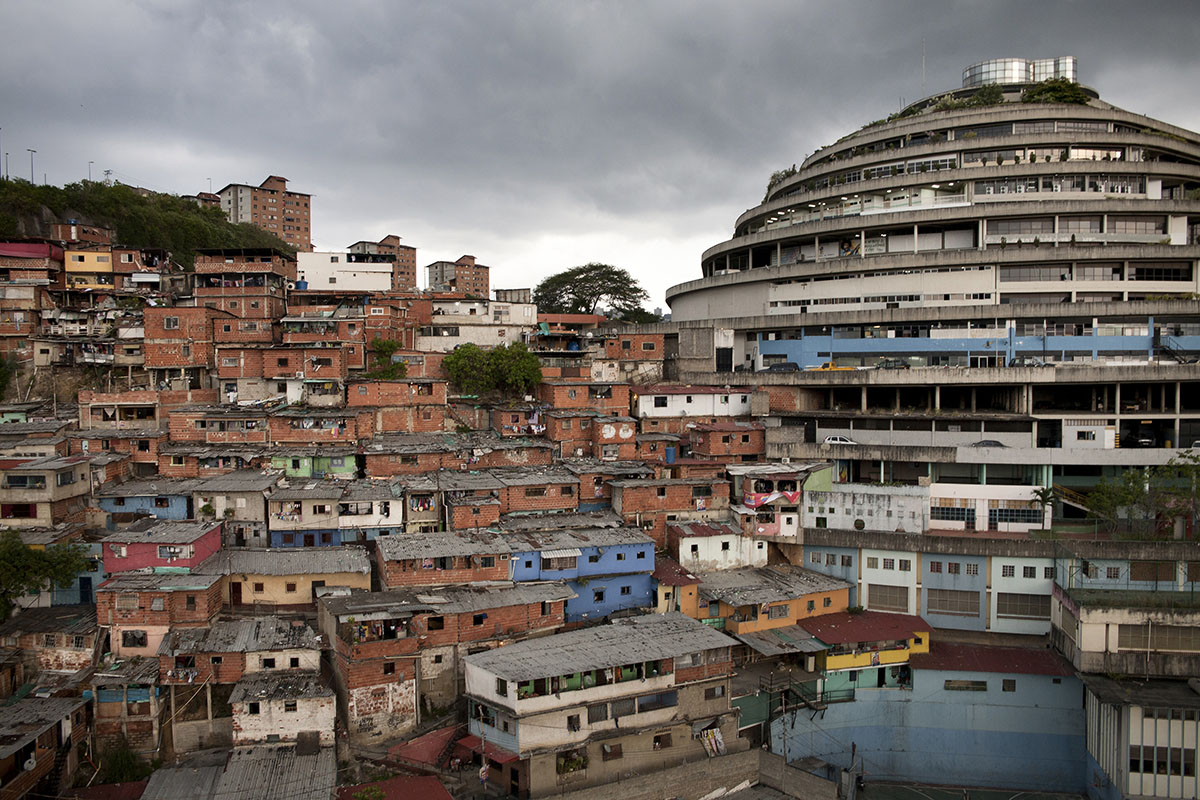Submitted by WA Contents
Terreform’s Downward Spiral reveals dramatic history behind Venezuela’s symbolic Helicoide
United States Architecture News - Feb 08, 2018 - 05:26 22997 views

Terreform, a non-profit urban research studio and advocacy group led by Michael Sorkin, has released its new book titled "Downward Spiral: El Helicoide's Descent from Mall to Prison", delving into an unmisseable history of Venezuela's symbolic and powerful architecture, El Helicoide, which is currently being occupied as "prison cells", "tortured chambers" by the state.
Released by Urban Research (UR)- the imprint of Terreform, the 268-page book discusses, analyzes and documents the bumpy historical progress of Venezuela’s spiraling concrete Helicoide, designed by Donald Richter in the late 1950s as a futuristic shopping mall.

El Helicoide in 2012. Image © Nelson Garrido
El Helicoide, located in central Caracas and inspired by the architecture of Frank Lloyd Wright and capped with a Buckminster Fuller dome, once seemed destined to consolidate Caracas’ reputation as a modern Latin American capital with its giant spiral concrete structure.
"The project faltered mere months from completion and the building’s unfinished ramps were relegated to the backdrop of the city’s southern slum-covered hills," highlighted Terreform's Urban Research.
"Despite myriad private and public attempts at recovery, El Helicoide has known only two uses: first, as a temporary refuge for almost ten thousand people in the late 1970s; then as a police headquarters and penal institution from 1985 on."

El Helicoide. Abandoned. Image © Paolo Gasparini, c. 1968
"Downward Spiral, the first book to address El Helicoide’s extraordinary architecture and history, seeks to rescue this singular site from oblivion," added the team.
Presented in five sections and co-edited by Celeste Olalquiaga and Lisa Blackmore, each section represents the building’s complex cultural history and the book presents El Helicoide as a living ruin, with its paradoxical status as half-abandoned, half occupied site that bears witness not only to one of the most outstanding periods in Venezuela’s architectural history, but also to the social and political upheavals that modernity has entailed.

Image © Pietro Paolini/Terraproject, 2012
"Combining archival documents, critical analysis, literary excerpts and visual artworks, the book traces the turbulent history of this living ruin and shows the dystopic side of urban modernity," stated Terreform's Urban Research.
The book was reviewed by prominent Professors from Columbia University, University of Essex and New York University and Emma Graham-Harrison from The Guardian until know.
“This anthology offers a veritable 360-degree tour of El Helicoide’s history from conception to modernist ruin, revealing in its various twists and turns a profound view into more than half a century of Venezuelan politics and the follies of 20th century automobile urbanism," said Barry Bergdoll, Meyer Schapiro Professor of Art History, Columbia University.

From the presentation of the book. Image © Terreform/UR
“Wide-ranging and richly illustrated, this book is a landmark contribution to the history of architecture and urbanism, not just in Venezuela but in Latin America and beyond," said Valerie Fraser, Emeritus Professor of Art History, University of Essex and author of Building the New World: Studies in the Modern Architecture of Latin America 1930-1960.
“As this book vividly illustrates, this urban progeria (or premature rubble syndrome) is but the symptom of a tropical modernity whose violent, syncopated, and contradictory temporality is materialized in and as space," said Jens Andermann, Professor of Spanish and Portuguese, New York University.

Front and back cover of the book. Image © Terreform/UR
(UR) Urban Research is a book series devoted to speculation about the condition and future of the city. We publish projects ranging from the practical to the utopian, from community-generated plans for neighborhood transformation to outstanding outcomes from academic studios, visionary speculations by designers burning the midnight oil, and collations of arguments about the most urgent issues of urban growth and survival. Our remit is to get the word out about solutions that exceed the imaginative reach of “official” planning and design and to encourage the most vigorous debate.
UR, the imprint of Terreform, seeks to become a key venue both for individuals and organizations engaged in progressive urban research, design, and critical advocacy. We invite the collaboration of all who share our interest in creating sustainable, beautiful, and just cities around the world.

One of the original models. Image © Archivo Fotografía Urbana/PROYECTO HELICOIDE
You can buy this book directly from UR's website. Letters to the Mayors of China - Kongjian Yu and the Future of the Chinese City, Spaces of Disappearance - The Architecture of Extraordinary Rendition and Gregory Ain: Low-Cost Modern Housing and the Construction of a Social Landscape are just few forthcoming books of UR.
You can find UR's books in many libraries and bookstores around the world.
Top image © Terreform/UR
> via Urban Research (UR)
